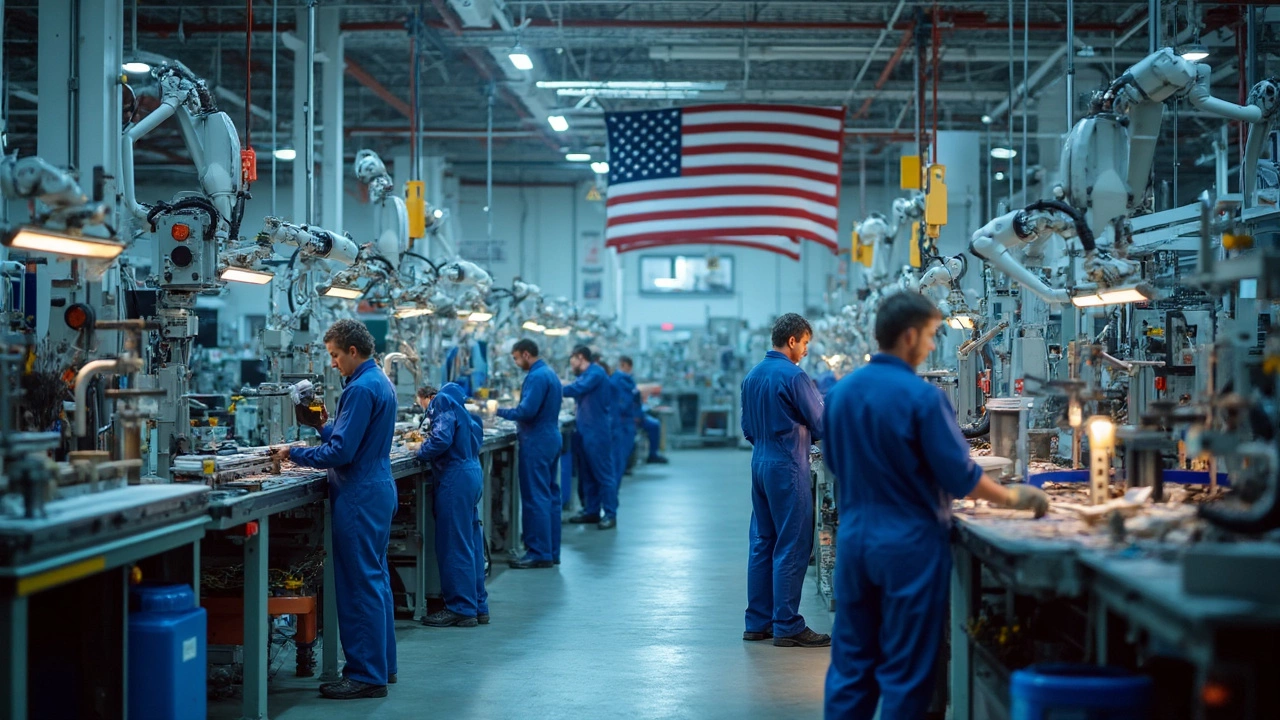- India's Furniture Manufacturing Industry Set for Growth Dec 10, 2024
- Cost Analysis for Setting Up a Small Textile Manufacturing Unit in India Dec 11, 2024
- Who is the World's Largest Chemical Manufacturer? - 2025 Update Oct 21, 2025
- Food Industry Units Explained: Types, Functions & Key Metrics Oct 8, 2025
- Kiran Mazumdar‑Shaw: The Pharma Queen of India Explained Oct 13, 2025
Global Manufacturing Rankings Overview
Wondering which country is crushing it in factories right now? You’re not alone. Every year, investors, policymakers, and engineers check the rankings to see where the heavy lifting happens. On this page we break down the most recent numbers, point out the trends that matter, and give you a quick cheat‑sheet you can use for decisions.
We pull data from official sources, trade reports, and real‑world production stats. The goal isn’t to brag about a single nation but to show the big picture: who’s growing fast, who’s slipping, and why. Whether you’re looking for a partner, scouting a market, or just curious, the rankings give you a solid starting point.
Why Rankings Matter
Rankings aren’t just a fancy list – they tell you where jobs, money, and new technology are flowing. If a country jumps from #10 to #4, expect more investment in equipment, better logistics, and a larger talent pool. Conversely, a drop often signals rising costs, policy hurdles, or supply‑chain bottlenecks. For a company deciding where to set up a new plant, these signals save months of research.
Another practical use is benchmarking. A mid‑size manufacturer can compare its output to the top performers and spot gaps. Are you still using outdated CNC machines while the leaders have moved to AI‑driven production lines? The rankings help you ask the right questions.
How We Rank the Manufacturers
Our methodology focuses on three core metrics: total production volume, value‑added per employee, and export share. Production volume shows raw capacity, value‑added per employee tells you how efficiently a country uses its workforce, and export share captures global demand for its goods.
We also adjust for inflation and currency swings so the numbers stay comparable year over year. Every quarter we update the data, so you always get the freshest view. The result is a clear, easy‑to‑read table that ranks the top 20 manufacturing powerhouses and flags rising stars below the top tier.
For example, in 2025 India moved up three spots thanks to a surge in automotive and electronics output, while the United States kept its lead in high‑tech equipment. Germany stays strong in precision engineering, and Vietnam continues its rapid climb in textiles and consumer goods.
What does this mean for you? If you need cheap, high‑volume parts, look at the fast‑growing Asian markets. If you need cutting‑edge aerospace components, the U.S. and Germany still dominate. And if sustainability is a priority, check which countries have lower carbon footprints per unit produced – that data is now part of the ranking sheet.
We also link each country’s ranking to related articles on our site. Want to know why AI chip manufacturing is booming in India? Check out the post "AI Chip Manufacturing in India: Who Makes Them and What's Next?" Want a deep dive into the biggest steel supplier in the US? We have that covered too.
Bottom line: the global manufacturing rankings give you a fast, reliable snapshot of where the world’s factories are thriving. Use them to spot opportunities, avoid risks, and stay ahead of the competition. Keep this page bookmarked – we’ll refresh the numbers and add new insights every few months, so you’ll never be out of the loop.
US Manufacturing Rankings: Where Do They Stand?
- Aarav Sekhar
- Mar 20, 2025
Curious about where the US stands in the global manufacturing arena? This article digs into America's ranking in the manufacturing sector, exploring key players, technological innovations, and challenges the industry faces. Discover interesting facts and tips about the companies leading the charge, the role of technology, and how the US competes globally. A must-read for anyone wanting to understand the intricacies of US manufacturing.
